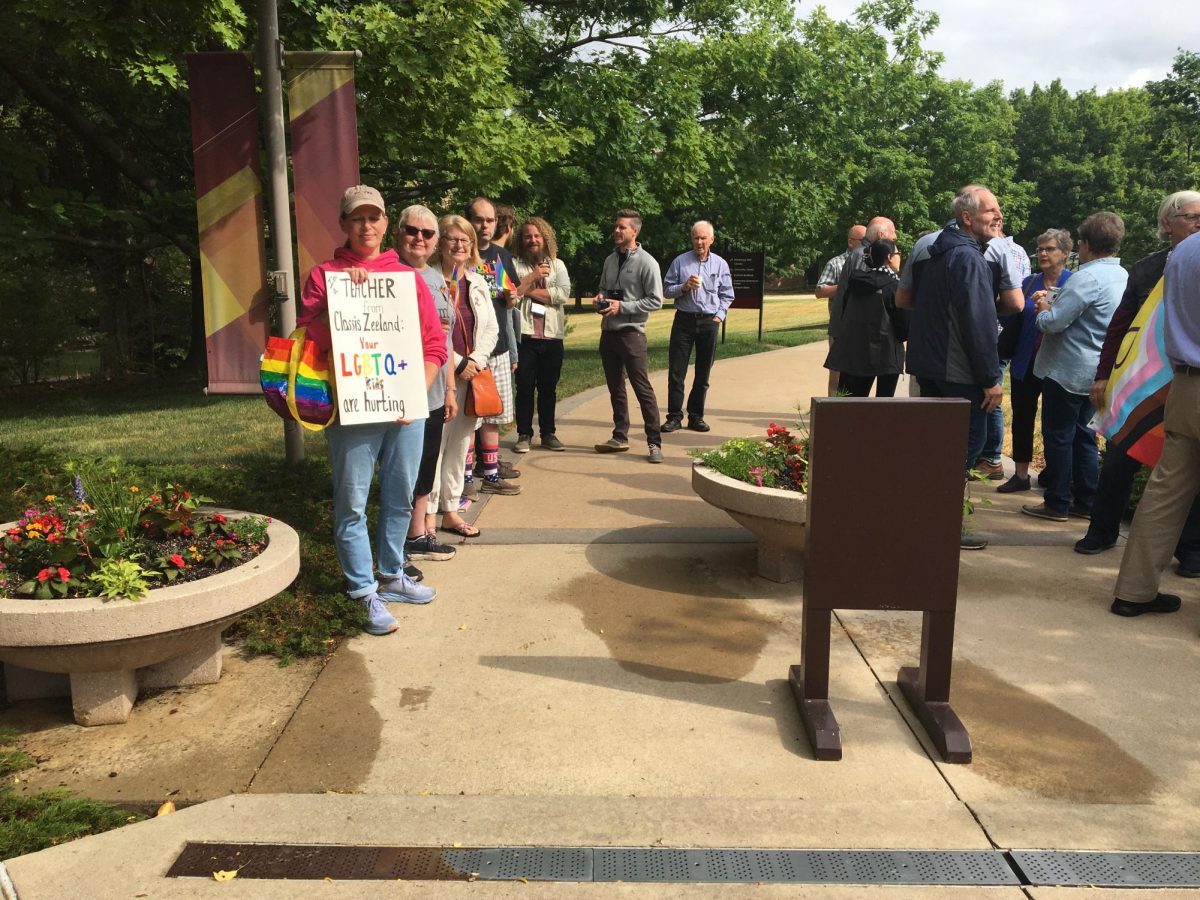Just east of the Prince Conference Center, a sandy slope overlooks part of the ecosystem preserve. This area, called Perseverance Dune, was built in the summer of 2020 to mimic a naturally occurring dune environment. Nearly four years after the project began, the long-term research possibilities for the Perseverance Dune project are still expanding.
In 2020, the ways COVID-19 would change research field trips were still uncertain. In response to this, Deanna van Dijk, a professor in the department of geology, geography and environmental sciences, had the idea to build a dune on campus in the summer of 2020.
After bringing up the idea of an artificial dune to colleagues, “eventually, the question turned into not ‘Can we do this?’ but ‘How would we do this?’” van Dijk said. Later that summer, 450 yards of sand were brought in to create the initial dune structure. The next year, more sand was added to the center of the dune to create a blowout formation, which allows students to study how wind shapes the dune.
Students in Calvin’s First Year Research in Earth Sciences (FYRES) course can once again do research in natural dune areas along Lake Michigan. However, Perseverance Dune remains a valuable research tool for geology, geography and environmental science students. Zach Guikema, a sophomore whose FYRES research was mostly at P.J. Hoffmaster State Park in Norton Shores, Michigan, told Chimes that an on-campus dune is still useful.
Guikema said that having a dune on campus makes training for field research more meaningful, and it allows students to apply their classroom knowledge in practical ways. “Unless you can actually go there, touch it, and measure it, and research it, you won’t really be able to make connections to your lecture material,” Guikema told Chimes.
Abigail Gustafson, a senior studying environmental science, told Chimes an artificial dune offers more freedom for experiments than a natural dune. This year, Gustafson was part of a study that examined the effects trampling had on dune plant survival. This study would have been impossible in a natural dune environment, where the goal is to “disturb the habitat as little as we are able,” said Gustafson.
Gustafson appreciates how Perseverance Dune is “something that’s shared and cared for” by multiple groups across Calvin. Currently, Calvin students, the Plaster Creek Stewards and Calvin Ecosystem Preserve staff all help with dune management.
Current work at Perseverance Dune is focused on creating a suitable habitat for Pitcher’s thistle, a rare dune plant. While it’s unlikely that Calvin will be able to obtain samples of Pitcher’s thistle, being able to mimic its habitat would still be an impressive achievement, van Dijk told Chimes.
For students who aren’t engaged in research at the dune, van Dijk hopes they still “watch how the dune is changing, how the vegetation is growing and enjoy a little taste of the Lake Michigan dunes here on campus.”











